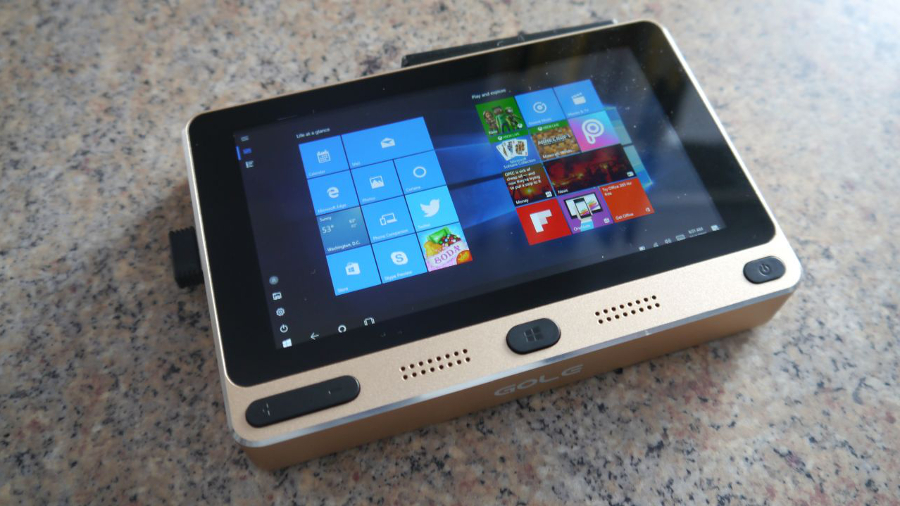Early Verdict
The Gole1 is an intriguing computer, and a cheap one, but it’s marred by a number of flaws, a couple of which may be deal-breakers.
Pros
- +
Very interesting concept
- +
Value for money
Cons
- -
Dual-booting needs improving
- -
Power supply port is redundant
Why you can trust TechRadar
The arrival of power sipping computer components combined with the abundance of compatible cheap parts from the smartphone world has fostered the rise of interesting new form factors in the world of personal computers.
From the keyboard that contains a computer through the HDMI dongle that plugs into the back of a monitor, to the one-eyed ‘monster’ or the PC that looks like a CD box: we’ve seen a fair few coming through our doors.
The Gole Gole1, however, looks like nothing we’ve seen yet. Well, almost – a few years ago, Fujitsu unveiled something similar which was only on sale in Japan and never reached these shores.
Launched in 2011, Fujitsu’s F-07C was a smartphone that could boot to Windows 7 and Symbian. It was ahead of its time but sadly the hardware was simply not ready at that point.
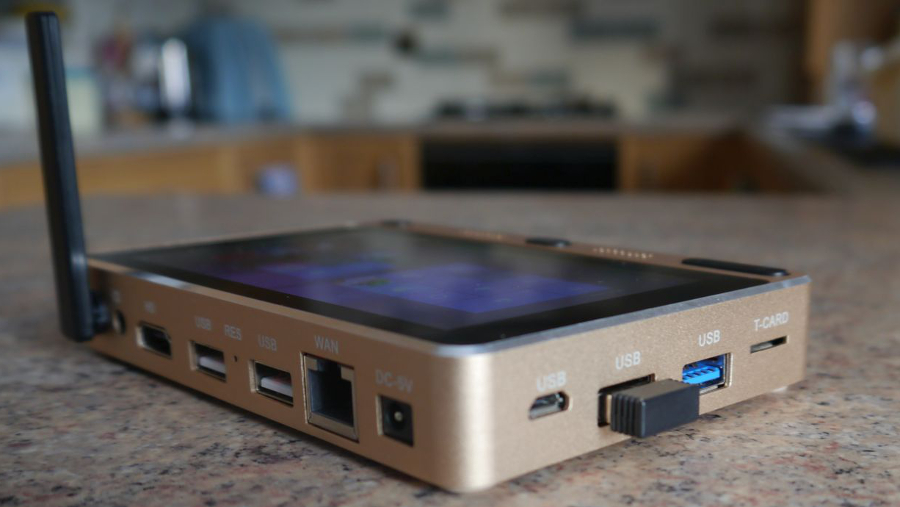
Uniquely among products we’ve reviewed, this is one that was initiated on Indiegogo with nearly $370,000 (around £295,000, AU$500,000) in funding raised, smashing estimates (and expectations) by more than a factor of eight.
The Gole1 scales back on connectivity: it still has Bluetooth and 802.11n Wi-Fi but no 3G/LTE and is more of a cross between a smartphone and a tiny PC complete with a full-size Ethernet port.
Its enclosure is a full metal one, opting for a champagne colour finish. Using aluminium removes the need for a fan, making the device entirely silent in operation.
- The Gole Gole1 was provided by Gearbest. It costs £143 (around $180, AU$245) at the time of writing. (This price is exclusive of any taxes that may be levied by HMRC or the courier companies on behalf of the seller. Want to buy tech from online Chinese retailers? Read this first.)
On the underside of the device are four rubber feet and air vents, while the four sides are populated with three USB ports (one of which is a USB 3.0 affair), one HDMI port, a plastic antenna, a microSD card slot, a headphone socket, a LAN port, one microUSB and a power socket. The latter is redundant as the Gole1 can be charged using the microUSB socket.
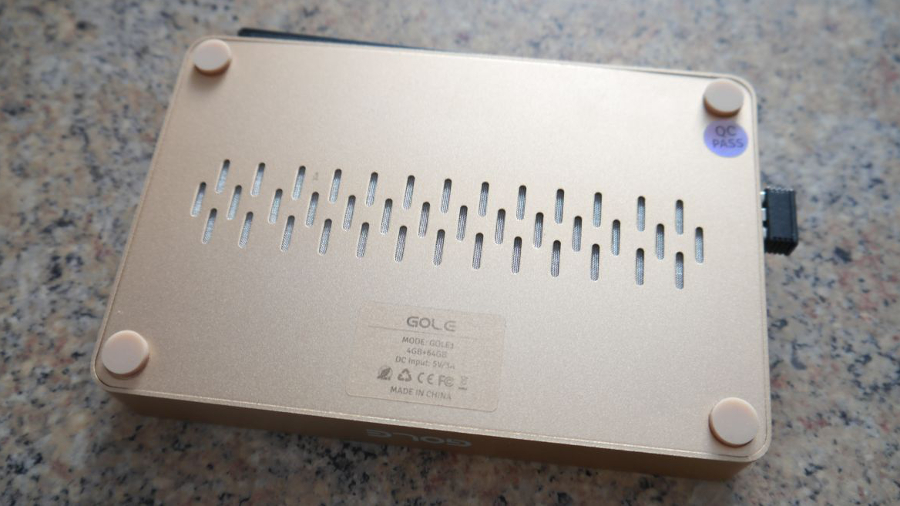
On top of the device you’ll find a 5-inch HD (that’s 1280 x 720 pixels) touchscreen display, the power button, a Windows button that doubles as a home button, volume buttons and two speakers.
Measuring 135 x 90 x 20mm and weighing just over 240g, the Gole1 is just about portable – although the thickness of the gadget prevents it from being truly pocket-friendly.
Inside the device there’s an Intel Atom x5-Z8300 quad-core system-on-a-chip, clocked at 1.44GHz with 2MB cache and Intel HD Graphics. Also in the component mix are 4GB of RAM, 64GB on-board storage (eMMC) and a 2,600mAh battery.
Yes – this tiny PC even includes a battery that allows it to stay alive for a couple of hours. We didn’t test it long enough to back that claim, but expect Android to have a longer battery life than Windows.
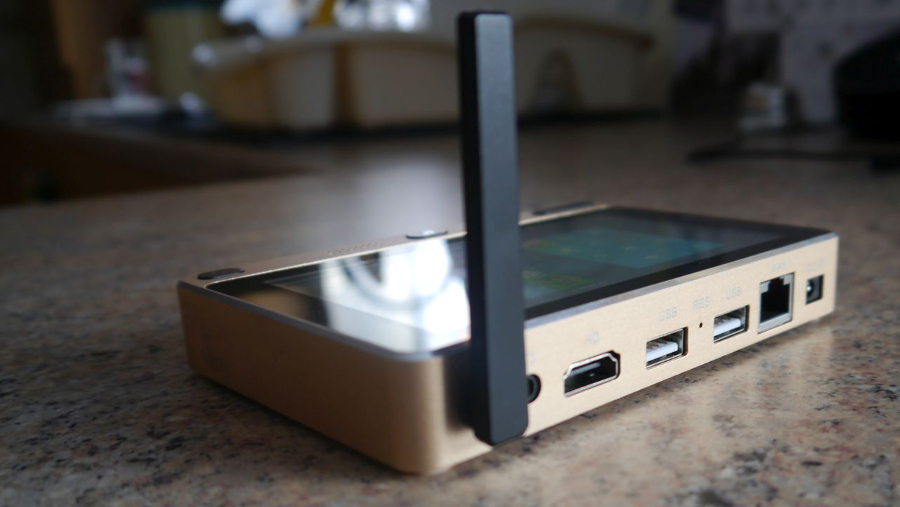
In operation, we found out that Windows 10 was already registered, a common practice among Chinese manufacturers and something we neither condone nor encourage. The PC logged straight into tablet mode but without any keyboard or the ability to display the desktop.
Blame the low resolution for that behaviour – you will only be able to use Windows to its full extent when you plug in a keyboard and mouse.
Swapping operating systems is not as straightforward as on the Teclast X98 Plus II, another device that also features the AMIDuOS dual-OS solution. As with the latter you are presented with a screen featuring two options, and a 10-second window in which to choose your OS.

But sadly there’s no straight option, within each OS, to switch directly across to the other – and the lack of prompt to confirm your choice on boot is annoying. As for other dual-booting solutions on the market, this one comes with Android 5.1 with little to no upgrade potential. You’re likely to be stuck with Lollipop forever!
When it came to sheer performance, the combination of the Atom CPU, the eMMC memory and the 4GB of RAM produced the sort of numbers one would expect under Cinebench, Passmark, CPU-Z and GeekBench.
In other words, there were certainly no surprises here, although the low resolution of the screen helped to some extent in the first benchmark, but caused issues on Passmark because it was below the minimum requirement.
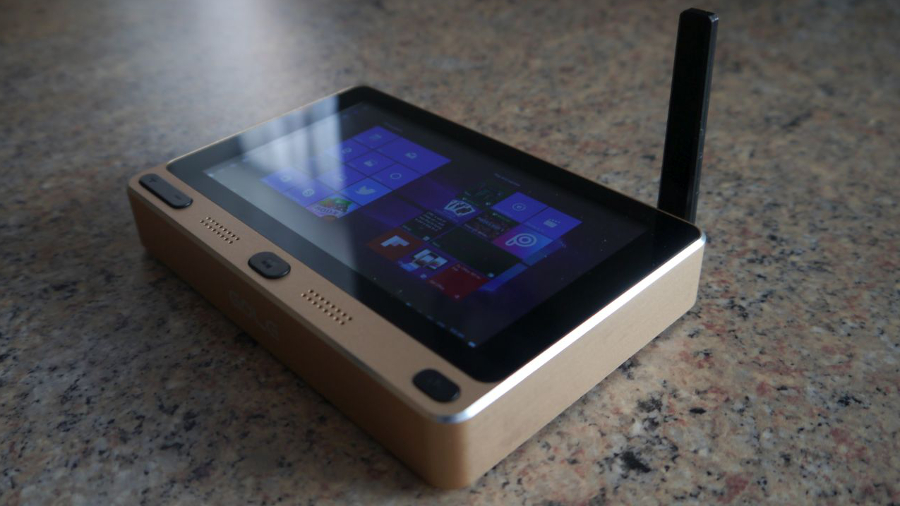
Early verdict
We love the concept but fail to see the use case for such a niche product as the Gole1. Beyond the initial excitement, this device proved to be just a computer with a tiny, barely usable, touchscreen.
Windows 10 is definitely not suited for such a small display and should you want a bigger screen, you might just as well opt for a more versatile tablet with a port extender or, dare we say, a laptop.
It’s when you run Android that the device really comes to life – the ability to dual boot is one that shouldn’t be ignored, and Google’s OS works like a treat on a system with 4GB of RAM.
But then again, you will not be able to update the OS beyond Lollipop, and while this is a powerful system, it still lacks the versatility of a tablet (not to mention the cameras a slate boasts).
A future version of the Gole1 should first and foremost iron out the many software kinks we encountered and potentially offer a bigger display. As a reminder, the smallest Windows tablet we’ve reviewed was a 7-inch model, the Linx 7.
Make the bezel super-small, add in a webcam and 4G functionality, remove the proprietary connector, make the OS switching more seamless, and this device will become a bit more interesting.

Désiré has been musing and writing about technology during a career spanning four decades. He dabbled in website builders and web hosting when DHTML and frames were in vogue and started narrating about the impact of technology on society just before the start of the Y2K hysteria at the turn of the last millennium.
What is a hands on review?
Hands on reviews' are a journalist's first impressions of a piece of kit based on spending some time with it. It may be just a few moments, or a few hours. The important thing is we have been able to play with it ourselves and can give you some sense of what it's like to use, even if it's only an embryonic view. For more information, see TechRadar's Reviews Guarantee.
